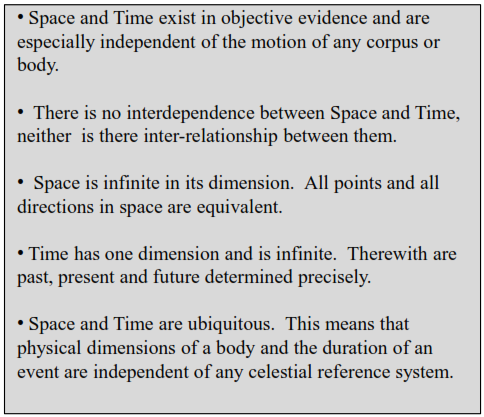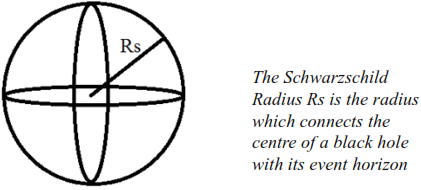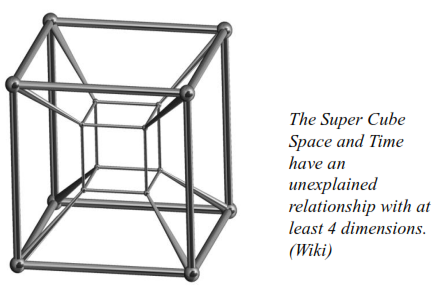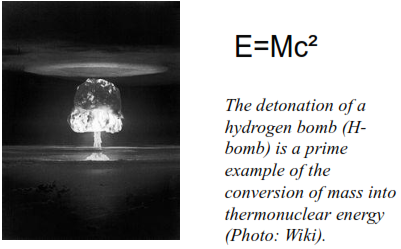Early History
In the 17th Century, little or nothing was known of the nature of stars or their relationships. Neither was it clear if our Sun was constructed of the same matter as the thousands of other sparkling stars in the night sky. People thought that The Sun contained vast quantities of burning coal. However, when seen through telescopes invented at the end of the 16th century, different colours could be observed. Some stars appeared more red, some more blue, but most were radiating white light. As the consequence of that, it became apparent that all stars were not the same. However, the difference in brightness of the stars was correctly explained by their unequal distances from Earth. Nobody knew anything about Black Holes – the name was yet to be coined. However, the laws of celestial mechanics were already known, owing to the work of one Johannes Kepler, a German astronomer. It was Kepler who had calculated the times of planetary orbits, according to their distances from The Sun. Today this is known as Kepler´s Laws of Planetary Motion. At this time however, the force which held the planets in their orbits of The Sun was still unknown. Obviously there was a secret, long ranging force present.

Suddenly in the 17th Century, appeared the genius Isaac Newton, President of the Royal Society in London and Lucasian Professor of Mathematics at the University of Cambridge (as later was the famous Stephen Hawking from 1979 to 2009).

Together with Gottfried Leibnitz, Newton is credited as the inventor of Infinitesimal Calculus and he was the first to contemplate the nature of light and the essence of gravity.
The controversial tradition is that it was a falling apple which caused him to think about gravity, whilst sitting under an apple tree. He also invented more practical applications. A telescope using a mirror as a reflector at the back instead of a lens in the front carries his name, The Newtonian Telescope, to this day.
Newton was first to devise a correct interpretation of gravity and to define the Laws of Motion in formulae. He was the one to conclude that it is the Earth which makes the apple fall, by gravitational pull. Conversely, there must also be an influence albeit small, by the apple upon the Earth. Newton had formulated his Laws of Motion already by 1686, describing the relationship between a body or mass and the forces acting upon it. Including Kepler´s laws of planetary motion he was able to formulate a law of Universal gravitation, which is also valid for black holes. Of course these bodies were as yet unknown in Newton’s time, therefore he made no mention of them.
Newton definitely discovered the relationship between mass and the force of attraction but he did not unravel the understanding of gravitation, its nature or essence. However, knowing the Nature of gravitation is the key to understanding black holes which impose enormous gravitational forces, as we will see in the next pages.


Newton´s formula for calculating the attraction between two masses, first published in the year 1686 (Wiki)
Newton´s Law of Universal Gravitation is valid for all ‘point masses’ on Earth, in fact the entire Universe. It deals with two point masses named m1 and m2 in the distance r. The force between them is directly proportional to the product of their masses and inversely proportional to the square of the distance between them. G is a constant. If we consider a black hole to be a point mass, the formula is valid for those as well.
Basically, this formula already reveals the problems which arise when the distance r is set at Zero, meaning that the celestial bodies have zero distance. By the law of mathematics, the result will become infinite. In mathematical calculations this is no problem. Mathematicians use this symbol for something which becomes infinitely large: ∞
How would we interpret it in physical terms? Can the force of attraction F become infinite, when two masses are aggregated to one point?
This would be a force stronger than anything known in The Universe. As a consequence of that, Newton´s formula can‘t be valid for very small distances.

The human brain seems be incapable of comprehending the concept of ‘beyond infinity’ but can cope with finding solutions for real, earth-bound problems. For us, forces and distances on earth are easier to handle. Astronomical distances and forces overwhelm our thinking because we do not need them for Earthly survival.
Only 70 years after the death of Newton, Henry Cavendish calculated the constant G as a very low number. Cavendish was a British philosopher and scientist and is noted for his discovery of hydrogen which he called "inflammable air". Much later it transpired that just the element hydrogen is essential for the building of stars and equally for black holes. So is the constant G.

This physical constant G is a natural constant determining how much two masses will attract each other. It is a distinct number. Were this number smaller, two masses would attract themselves to a lesser degree. e.g. The Sun & the Earth. As a consequence, the Earth would orbit at a greater distance from the Sun. Hence this could result in the Earth’s receiving much less light and heat than is actually the case. It could possibly become too cold to sustain life.
Conversely, if the number G were greater, the Earth would orbit much more closely to the sun. The resulting greater temperature would render life quite impossible, water would evaporate and we might have the same conditions as exist today on the planet Venus. For that reason, it is crucial to all life that the physical constant G is as it is. This is not self-evident because G is related to space and time, and both are able to change as we will see in the next chapters. On the next page Newton´s formula is depicted in a diagram. The power of attraction F versus the distance r of the two masses m1 and m2 will be seen.

Newton´s formula displaying the Force of Attraction F versus the Distance of 2 Masses (plotted with GnuPlot)
In that diagram, it will be seen that when the distance r between two masses is reduced, the forces between them increases. In the case that the two masses concentrate at one point, the force F will become infinite. The computer program running "Gnuplot" locked up when F=104 was exceeded.
If we assume one of the two masses to be a star and the other to be a black hole, there would be no way for the star to escape the black hole. The star would simply be dispatched and gulped by the Black Monster. Apparently a black hole is a lone wolf capable of massacring everything in its path.
NEWTON‘S THREE LAWS OF MOTION
First law of motion: an object continues in its state of rest unless compelled to change that state by an external force
Second law of motion: if a force acts on an object, it will cause an acceleration
Third law of motion: for every action there is an equal and opposite reaction


We can summarise the positions in Physics until the end of the 19th. century as follows :

All the above mentioned assumptions were – as we now know – either wrong or severely limited!

In the late 18th century, the English parson and teacher John Michell predicted the existence of massive stars with gravity so strong that their escape velocity would exceed the speed of light. Michell was Rector near the city of Leeds in the UK. The idea struck him in 1783 while considering a hypothetical method to determine the mass of a star. In those days nobody knew anything of a star’s composition. It was thought that the Sun was an enormous heap of burning coal. Michell accepted Newton‘s theory that light consists of small particles having mass. He used Newton‘s formula and calculated that suns having a mass 500 times the mass of our Sun would induce such a strong attraction that even light couldn‘t leave the surface. He declared that it therefore follows that these suns can‘t be seen from Earth. Moreover, Michell, presumed that such dark stars might reveal their existence by the movement of other stars which are close to them. This all came true as we know today. He correctly predicted black stars. These stars have been called Back Holes since 1967.

Ref. J.Michell, an Abstract from the "Philosophical
Transactions of the Royal Society of London", 1783
Later in the year 1801 the German astronomer Johann Georg von Soldner calculated the deflection of starlight by Newton’s gravitational. Soldner became Director of the Munich Observatory in 1815 and his calculations on the deflection of the light by heavy stars were later used by a physicist named Albert Einstein. Soldner speculated on the possibility of a massive dark object in the middle of The Milky Way. People still were unsure of the character of light. Light particles or photons – as we call them today - were supposed to have mass of course, but there were doubts. Today we know for certainty that there is a black hole with immense gravity in the middle of our Galaxy. That is what this book proposes to address.

Knowing the precise velocity, one could calculate distances in space with even higher accuracy. e.g. the distances to celestial objects like planets and stars. It was simply not possible to measure the speed of light with the available, medieval instruments because of the very high value of the speed of light. Light was always supposed to be infinitely fast. Additionally, the nature of light and its composition, was not understood. Light was supposed to be particles like small balls bouncing off on mirrors. Christiaan Huygens explained in the 17th. Century that light consists of waves and not particles. He arrived at that conclusion by observing the behavior of light in water and in a glass prism, turning a white beam coloured. If light is waves, like water waves, what was the carrier? The Ether was proclaimed. A dilemma then arose: who was right, the one declaring light to be waves or the other one saying light is particles consisting of nothing more than photons? The next generation of physicists spoke of the dual character of light (which means, both are right). depending upon the situation in which the observation was made.

The first calculation of the velocity of light was achieved by a scientist from Denmark in 1676. Ole Römer noticed a delay in the time of arrival when observing one of the Jovian moons, by name Io. Depending on its position (relative to Earth), light arrived a little later than was calculated by Kepler‘s laws. Römer interpreted the missing 10 minutes as the duration that light needed to reach the Earth because Jupiter was in conjunction with Earth. Obviously the light needed slightly longer to travel the distance which was being used by him to calculate the speed of light.

Ole Römer‘s measurements of Jupiter‘s moons very closely approached the values we have today. Considering the known distances between Earth, Sun and Jupiter, he calculated a value for the velocity of light at 212.000 Km/s. This is close to the correct value of 300.000 Km/s which equals 186,000 miles per second.
After Ole Römer, Armand Fizeau succeeded in 1848 in calculating the very first accurate value of the speed of light. He sent a light beam through the holes of a rotating wheel to a mirror at some miles distance. This mirror reflected the beam again through the holes. By measuring the rotation speed of the wheel when the beam was visible again, it was possible for him to determine the velocity of light to within 5% of the value we have today.

Reproduction of Fizeau´s rotating wheel, designed for measuring the speed of light (Wiki)
The exact value of the speed of light in a vacuum is c = 299,792,458 metres in each second, equivalent to 186,282 miles per second – the highest known speed in space. Nothing is faster.
The Michelson-Morley-Experiment was conducted by the German-American Physicist Michelson in Potsdam, near Berlin in 1881 and later by the American chemist Morley in Cleveland, Ohio.
For that purpose, a system of mirrors was mounted on an optical table in such a manner that one axis or pivot pointed in the direction of the trajectory of Earth around the Sun and another pivot at right angles to that trajectory. With an ingenious mirror system, the light beams were reflected and created intereference fringes. With the help of that table, one could measure the difference in the velocity of light in both paths but not the velocity itself. It was anticipated that the velocity of light would increase in the direction of the trajectory path, Earth around the Sun by 30 km/s because that is the speed at which the Earth circles the Sun. This was not the case. Apparently the velocity of light is always the same, independent of the direction in which the measurement is carried out. Furthermore, following that experiment, the existence of a medium called "Ether" could be discounted. Unlike waves in water, light needs no medium.

Eventually, it became clear that the velocity of light is a further fundamental and natural constant, like Newton‘s gravitational constant G. If light takes time to travel from the stars to Earth, then looking into space is always looking back in time. The more distant the stars are from Earth, the longer light needs to reach The Earth. For instance, light has about 8 minutes transit time from the Sun to Earth. That means that we only ever see our Sun as it was 8 minutes ago.
In one year, light will travel the unimaginable distance of 9,460,800,000,000 km or 1013 km. This is also known as 1 light year and is a measure of distance. The distance to our next nearest Solar system, called Alfa Centauri is about 4 light years. The distance to our nearest Galaxy, named "Andromeda" is about 2.5 million light years. That means, we don‘t see Andromeda as it looks now but how it looked 2.5 million years ago. The Universe is entirely history.


With the Hubble space telescope, the most distant, visible Galaxies are at a distance of 10 billion light years. This means, the deeper we can look into space, the more we see back in time – perhaps to its beginnings. There are similarities with ground test drillings on Earth. We look further back in time the deeper we drill. Similarly, a look with the help of a telescope to far distant Galaxies is always a view into the past – and that is simply because light has a finite velocity.

The Hubble Space Telescope (HST) .Placed in orbit in 1990, still in service today. Images show furthest Galaxies at a distance of 10 billion light years (By courtesy of NASA)
Let us return to Black Holes. Karl Schwarzschild, former Director of the Potsdam Observatory, near Berlin, contemplated Black Holes in about 1900. He assumed that there is a relationship between the size of a black hole and its mass. He called the centre of a black hole, a Singularity. In addition, he postulated an outer border, a radius where black holes finish. We call that radius the Schwarzschild Radius. This radius encompasses a huge area called the Event Horizon, the border which is the point of no return for approaching matter. It can no longer escape because of the immense gravitational pull of the hole.
Vice versa, neither can light inside the black hole escape, being permanently imprisoned. With these definitions Schwarzschild compounded his basic ideas for the black holes with which we are dealing so far. They became key words in Astro Physics.


The former observatory Potsdam Berlin, place of Karl Schwarzschild (Wiki)
Schwarzschild was the first to calculate the size of a black hole which is determined by its radius Rs and its inherent mass M only. He found a simple relation between both:

The formula shows that there will be black holes in different sizes: big and small ones depending on their masses. If further mass is gathered by the black hole, it will become greater and its radius will grow in proportion to the collected masses when for instance, stars are captured. The formula also contains Newton‘s gravitational constant G of which we are already aware and c, the velocity of Light, also a constant.
He also suspected that black holes arose from big stars. The bigger a star is, the greater will be its Schwarzschild Radius later, when a star transforms into a black hole. Schwarzschild explained the different sizes of stars by the difference in clouds in Space, at the birth of the Universe. He assumed the distribution of the gas clouds to be the result of chance.
The Event Horizon, so he stated, is not a fixed nor solid surface but more a border. Beyond that horizon, observation is impossible – invisible for all external watchers. All observation is limited and ceases at that surface.

Schwarzschild limited his calculations and assumed the most simple form of a black hole, to have no spin and no electrical charge. In reality, we deal with fast rotating black holes having spin and perhaps electrical charges forming large magnetic fields which can be detected from a distance.
In the early twentieth Century, the Indian Physicist Subrahmanyan Chandrasekhar wondered if there were a limitation to the mass of the stars known as Red Giants. The name came from its red radiation. These stars are expected eventually to collapse to a black hole.
He was a student at Oxford, UK. In the holidays, on the way back to his home country India, and in 1930 aboard ship, he found himself with time to muse on black holes. (the journey lasted three months). He wondered just how small, black holes might be formed.
The result of his calculation was that stars with more than 1.4 to 3 times the mass of our Sun would be capable of collapsing into so called Neutron Stars. Beyond three solar masses, they will become Black Holes at the end of their life. With that calculation, the minimum possible mass was determined. Making use of the Schwarzschild formula, it was also possible to calculate the diameter of the smallest black hole imaginable.

Some years before Chandrasekhar, Albert Einstein was engaged in studying the structure of space and time. He was interested in the behaviour of matter at high speed, the influence of matter on space and the essence of gravity. Einstein’s greatest contribution to the world of Physics was his Theory of Relativity.
This theory determines the interaction amongst Matter, Space and Time, or what he called Space Time. It introduced gravitation as an attribute of Space-Time. He stated that massive objects cause a distortion in SpaceTime, which is felt as gravity. He published his Theory Of General Relativity in 1915 and presented it to the Prussian Academy of Science. He also focused on the velocity of light which led to his Theory of Special Relativity. Along with the Theory of General Relativity, it came a new understanding of space and time and the meaning of "simultaneously".

One of his statements was concerning the speed of light: He noticed that the speed of light was independent of the motion of all observers. Countless experiments in later years confirmed that this theory was right. If that is true and the speed of light is indeed the limit, it is a natural barrier.
For instance, if the driver of a moving car switches on the headlamps, the speed of the moving car does not add to the speed of light as we would have expected in respect to the physics of Newton. The speed of light remains at c.

The speed of light from an automobile headlight, will remain unchanged, regardless of how ever rapidly the car is travelling (Photo R.Brückner)
Again and again Einstein‘s theory was tested and found to be true. Particles with a speed exceeding that of light were postulated in vain. These particles had already acquired a name: Tachyons. They have never been found.
For Einstein, a black hole was a special case of a heavy mass causing a deformation or deflection of the SpaceTime in the centre. The Theory of Relativity predicts a singularity in at the centre, under some circumstances. Some parameters go infinite if space is bent by the influence of a heavy mass.
Such parameters are the bending of space-time as well as the values for force, mass and time. Sometimes the bending of space-time is depicted by a picture similar to the one below. A large mass in the middle of the horn quasi will deform space-time. This means that in reality that space as well as time can bend or change. It can go so far that both will change over: time will become space and space will become time. It may be hard to believe or to imagine but is a consequence of Einstein´s theories. Mathematics alone can describe such things accurately and completely.

For Einstein a black hole was the special case of a heavy mass causing deformation or deflection of space-time at the centre (Wiki)
Due to Einstein‘s Theory of Relativity, space and time can be regarded as having 4 dimensions, the so-called space-time. Space isn´t linear, as we are accustomed to perceiving but it is curved because of the energy and matter involved in bending space. The dependencies among space, time, mass and energy gave birth to a new field of research called Gravitational Physics. Again black holes with their immense gravitational forces, come into focus.

One can even draw the space cube having 4 dimensions: Imagine that all corner points of the cube in the drawing are orthogonal or at right angles to each other. The drawing displays a cube having not only three dimensions but four.
Currently, Space-Time cannot be correctly defined, neither by the Theory of Relativity nor by Quantum Theory.
A further consequence of the Theory of Relativity is that world famous formula, e=mc². The formula shows how energy is equivalent to any mass. "Equivalent" means that matter can appear either as mass or as energy in one form or another, e.g. light. With the help of this formula, both values can be converted.
This formula has immense significance in the interpretation of black holes. Whilst it´s true that black holes have a great mass concentation, they also need to have great energy resources. Obviously, there is a lot of energy in a black hole.

An horrendous ramification of this formula is a nuclear weapon, the hydrogen (H) bomb. The explosion results from the action of Nuclear Fusion, a process involving the conversion of Hydrogen (the lightest element in the Atomic Table) to the next heavy element, Helium. This action occurs in stars and also of course, in the Sun, the result being the release of radiation and heat. We will have a closer look to that process in the chapter "The Birth of Stars" because they are of a high relevance for black holes.
In addition to his Theory of General Relativity, Einstein presented his Theory of Special Relativity. The extension dealt with the motion of masses in space and time. That theory complements Newton´s Laws of Motion (formulated 200 years before Einstein) in respect of the inertial system on which an observer is focusing .
Einstein stated that owing to the theory of Special Relativity, all physical laws in all inertial systems are the same. For instance, the speed of light will be the same in any inertial system. The consequence is that there is no fixed space and equally no absolute time. On the contrary, volume and time depend upon the motion of the object in respect to an observer´s position. Both are changing, space and time. Both are variables. The only parameter which does not change is the velocity of light.
Before Einstein, a mathematician called Minkowski supposed that space and time were combined by what he called Continuum. His description of the mathematics involving the transformation of inertial motion systems became the trail-blazer for the Theory of Relativity.

The nomenclature "Black Hole" was first used in 1967 when the American physicist John Archibald Wheeler from the American Space Agency NASA, gave a lecture at the Goddard Institute for Space Studies in New York.
At that conference one of the topics was the final stage of heavy, big stars, the so called Red Giants. Astrophysics states that stars do not live forever and that there is a definite end after some billions of years. How the end might appear was unknown at that time.
Red Giants usually gain a diameter about 25 times that of our Sun and are numerous in space, radiating deep red of course. It was clear from the red that the surface temperature had been lowered. The demise of such stars is full of drama: they do not fade away slowly but finally explode, ejecting their mantle. The remainder forms a small dense core which can become the centre of a black hole.

Participants at that conference described black holes as having 3 attributes: they are provided with mass, electrical charge, spin and nothing else. This caused Wheeler to make the statement: "Black holes do not have hairs". The No-Hair theorem was born.
The term "Black Hole" quickly spread because it clearly describes what remains after massive stars have exploded at the end of their life. The associated mechanismn is not yet fully understood, even today.
– How can it be that the explosion of a star will effect precisely the opposite, i.e. under certain circumstances, an implosion?
– How many are there in space and what do they mean?
– Where and what they are?
– Why do they exist at all?
As always, Science creates more questions than answers. Each answer brings at least two new questions.
To understand the black hole, we first need to understand the physics of the Red Giants from which they emerge. For that reason we must loo



































